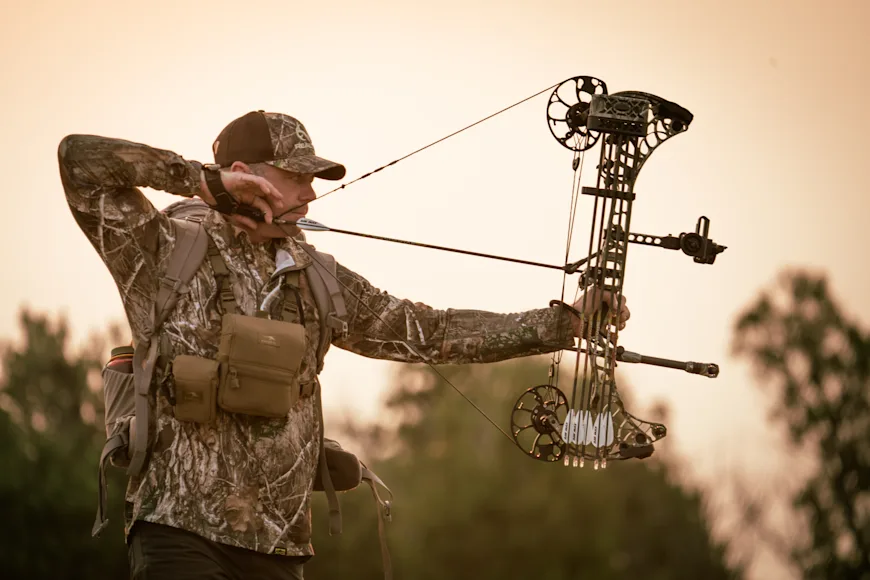We may earn revenue from the products available on this page and participate in affiliate programs. Learn more ›
When you buy a new compound bow, one of the first questions you’ll be asked is: What’s your draw length? If you’re not sure, don’t worry, because the basic procedure for how to measure draw length is super simple: You just hold your arms outstretched to your sides, measure your “wingspan” from fingertip to fingertip, and divide by 2.5. If your wingspan measures 70 inches, for example, then your draw length should about 28 inches.
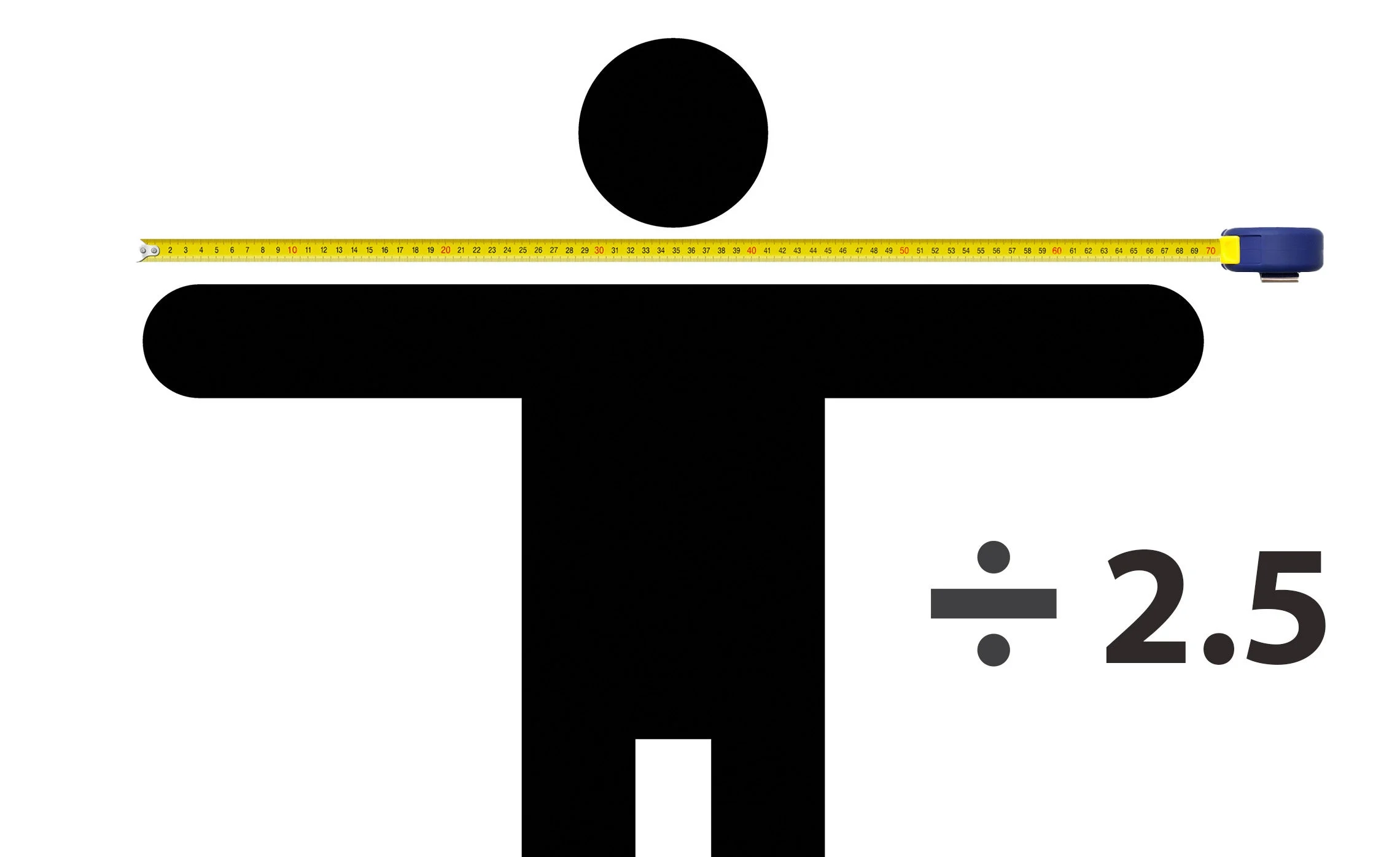
The wingspan formula is handy and provides a good starting measurement that’s generally correct for most people. However, it is not always perfect for everyone—and getting your bow’s draw length exactly right for you critical. So, let’s look a little closer at how to measure draw length for a compound bow.
What Is Draw Length?
Draw length is the distance you have to pull a bow’s string back (as measured from the riser) to reach your perfect anchor point (where your string hand meets your face) at full draw. If you’re 13 years old and 4′ 11″, you won’t need to pull it back as far as an adult man who’s 6′ 2″. That’s fine. All that matters is the bow’s draw length setting, whether it’s 24 inches or 30 inches, matches your draw length. Unlike traditional bows, which can be drawn back a little farther or shorter by different shooters, modern compound bows are typically set to one specific draw length, and for you to shoot your best, that setting has to fit you perfectly.
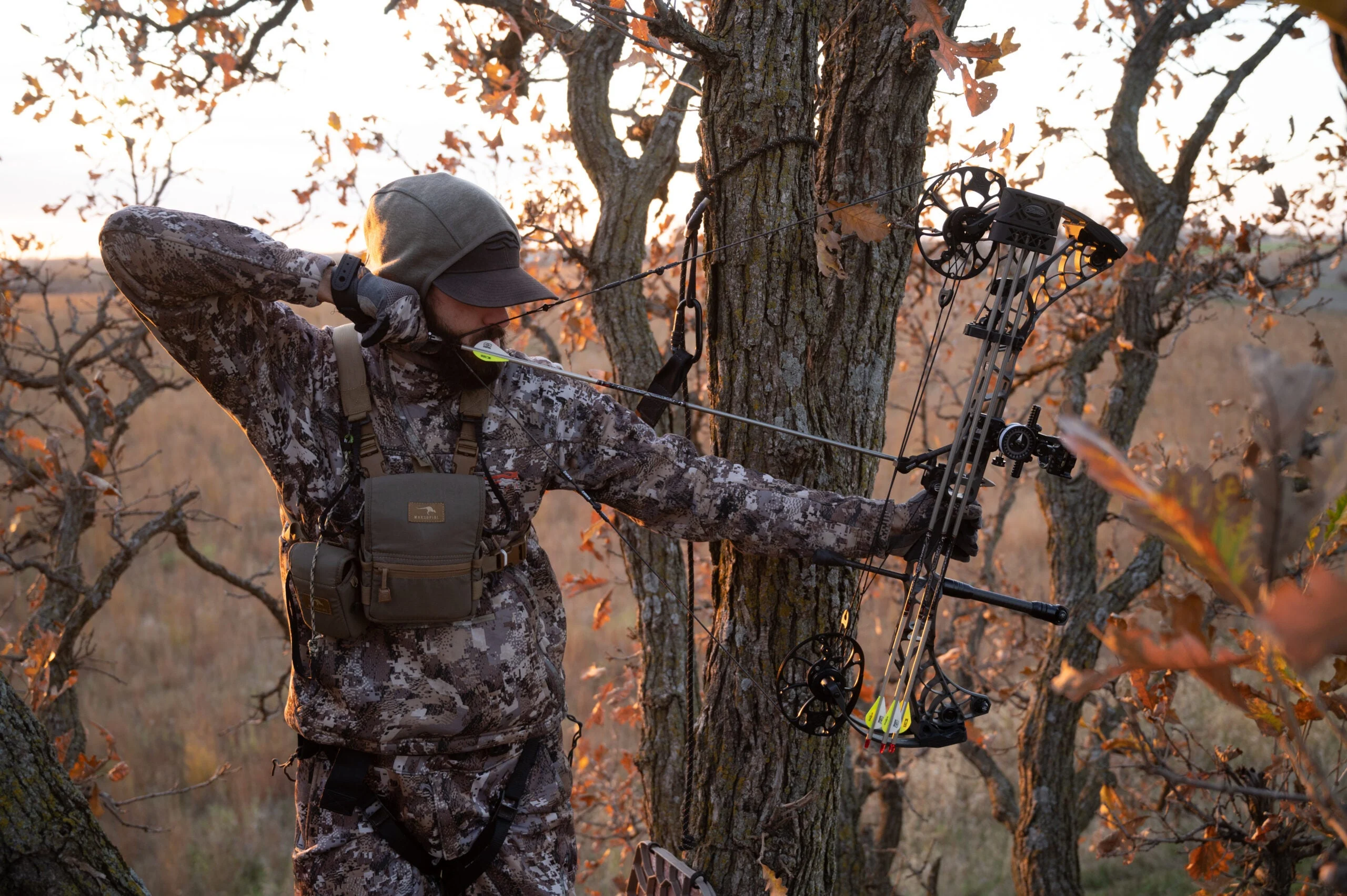
The Wrong Setting Wrecks Accuracy
Shooting a bow with too long a draw-length setting makes it nearly impossible for you to anchor consistently against the back wall, and one that’s too short robs you of speed while forcing you to bend your bow arm too much or creep you anchor point inconsistently forward. Either way, it’s an accuracy killer.
How do I know? Some years ago, F&S whitetails editor Scott Bestul, hunting editor Will Brantley, and I tested this by shooting three different bows, first set at our correct draw lengths, as determined by our bow-shop pros. Then we changed the draw-length setting to 1 inch too long and shot the bows again. The results? All three of us utterly fell apart. Too long a draw length setting messed up our anchor points and stretched out our bow arms to the point that they were in line with the string. Once the string whacks you in the arm a couple of times, you get jumpy, and everything goes to hell.
Many hunters are tempted to shoot as long a draw length as possible, because it means more arrow speed. But what good is extra arrow speed if you don’t hit your mark?
How to Measure Draw Length Perfectly
To measure your draw length, start with the formula above: wingspan in inches divided by 2.5. Now, here’s the good news: With many bows, that’s all you really need. However, with some other bows, you’ll want to be more precise. The difference comes down to how easy or hard it is to change the draw-length setting on the bow in question.
Rotating Draw-Length Modules
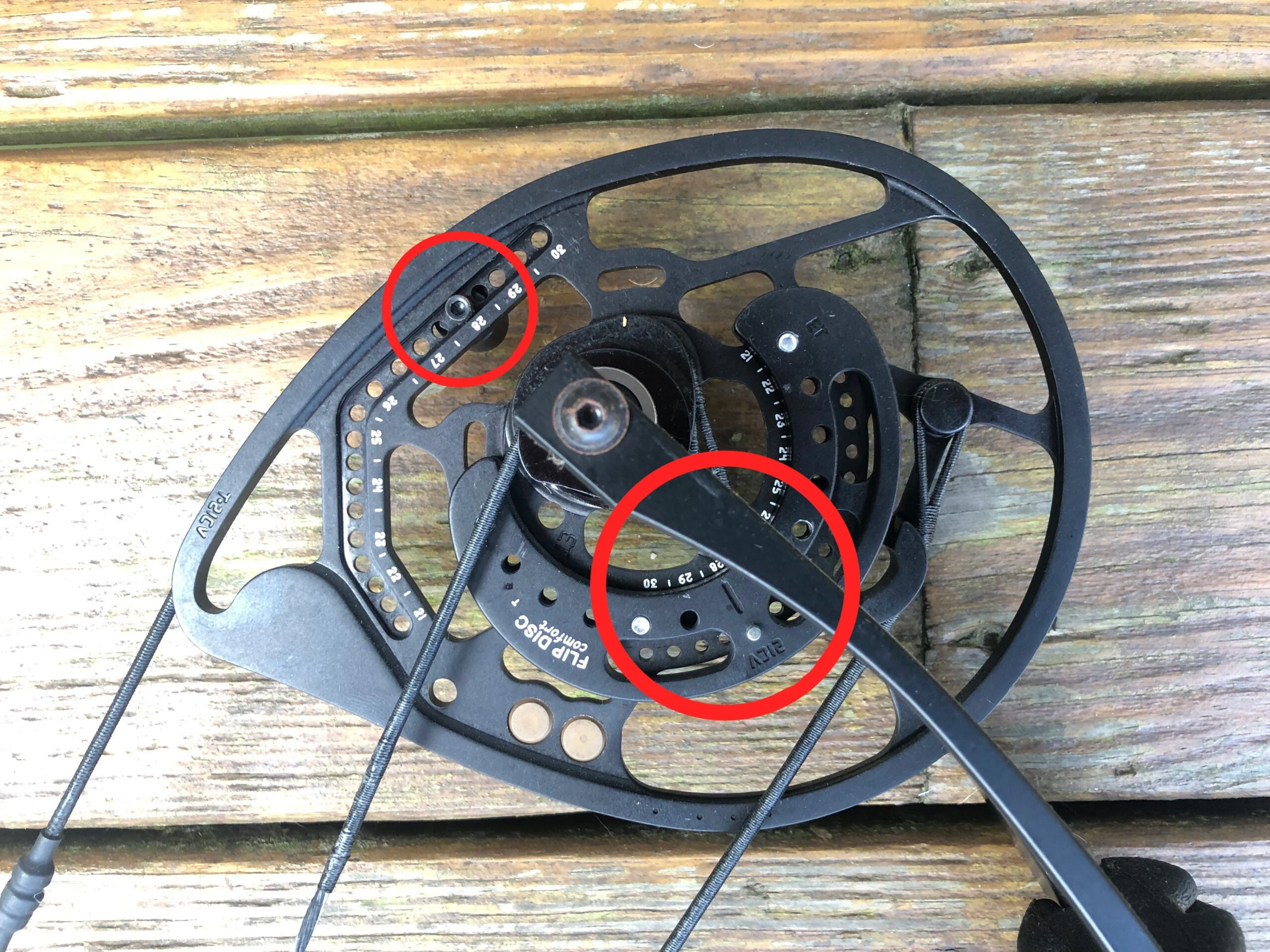
With bows that have a rotating draw-length module, all you need to adjust draw length is remove a couple screws with a hex wrench, rotate the mod per the owner manual instructions, adjust the draw stop, and you’re done. No bow press needed. With these bows, all you need is an approximate draw length, then you can make quick and easy adjustments, usually in half-inch increments, to dial it in perfectly for you.
Fixed-Draw Modules and Cams
Some other bows have fixed draw-length modules. To change the draw length on these, you need to replace your current module with a different one, which can cost money and require a bow press. Finally, some compound bows have fixed-draw-length cams. To change the draw length setting on these, you need to swap out the whole cam.
If you are buying a bow that has either of these two systems and you are asked, “What is your drawl length?” you want to make sure the answer you give is exactly right, because it won’t be easy to change once you get the bow. So, unless you already know your exact draw length, and you know it’s exactly right, the best bet here is to take your shooting release down to the bow shop and have the pro there measure you precisely for draw length. If you’re buying the bow from a pro shop, they’ll usually do this for free.
Other Factors that Affect Draw Length
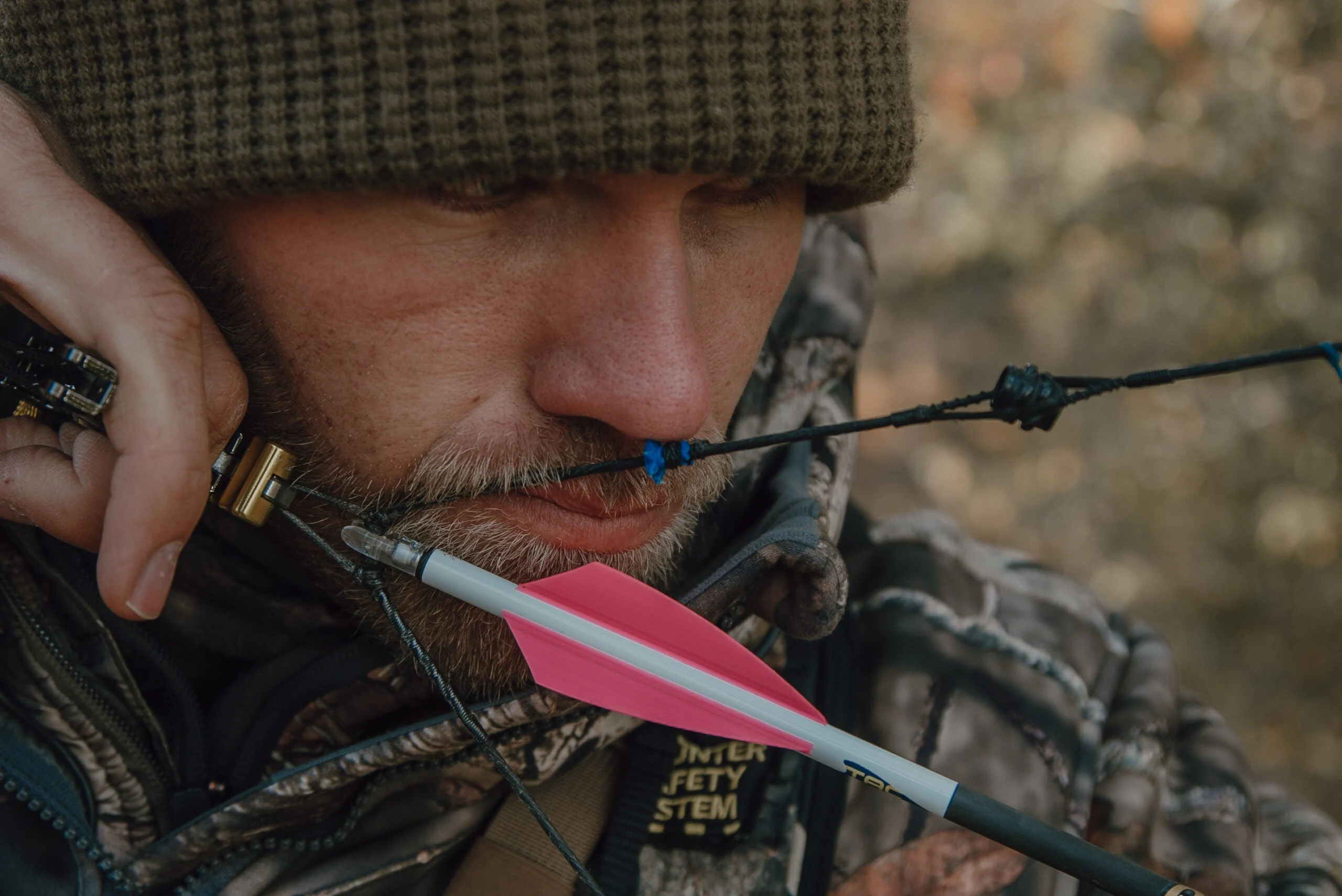
Most modern compound-bow shooters use a D-loop and a mechanical release aid. The length of that D-loop, as well as the arm of an index-style release (the most popular for hunting), factor into your precise draw-length setting. No one would tie a D-Loop that’s 2 inches long, but just to illustrate the point, imagine if you did. You would then need a much shorter draw-length setting to shoot with your usual form and anchor points.
So, once you’re dialed in and shooting well, it’s important to use the same release (or at least same-length release) and keep your D-loop length consistent; otherwise, you are effectively changing your draw-length setting. That said, there’s a way to take advantage of this wiggle room, too, especially if you have a fixed-drew cam or mod. You can experiment slightly with D-loop length to fine-tune your setup to fit your draw length absolutely to a tee.

